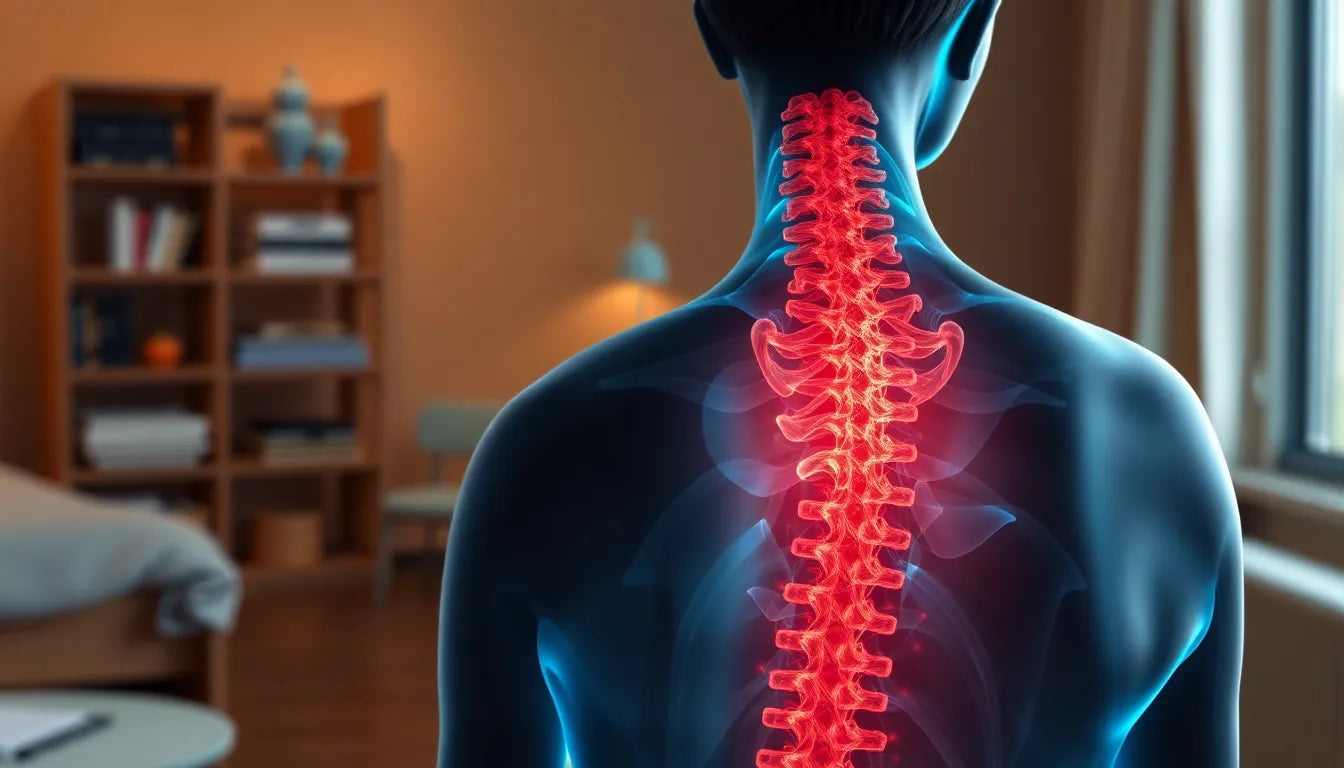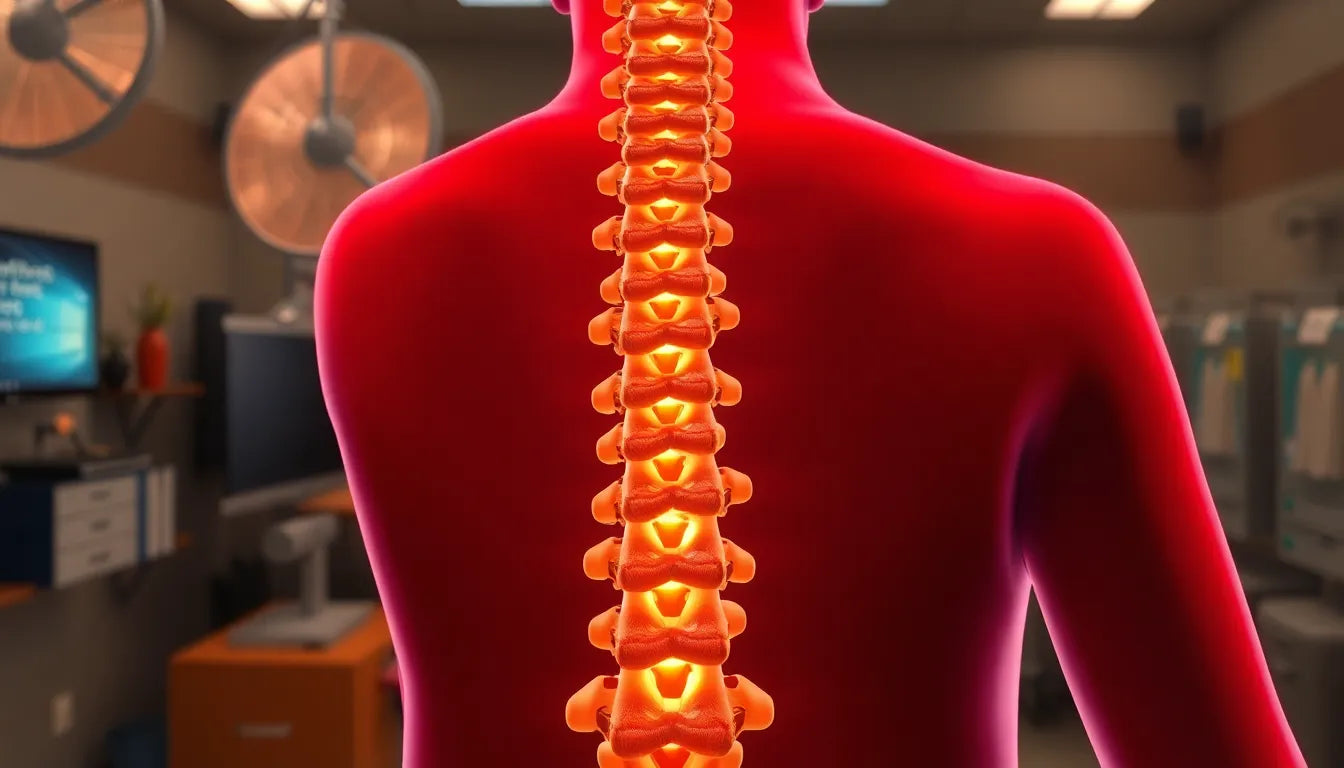Understanding the intricacies of a herniated disc is crucial for anyone seeking relief from this painful condition. A herniated disc occurs when the soft, gel-like center of a spinal disc pushes through a crack in the tougher exterior casing. This can result in irritation to nearby nerves, leading to symptoms such as back pain, numbness, and tingling in the limbs. The discomfort and limitations imposed by these symptoms can significantly affect daily life, making a swift recovery a top priority for those afflicted.
the quest for fast recovery
The journey to healing a herniated disc swiftly is often driven by the pressing need to alleviate discomfort and regain normalcy in daily activities. Individuals experiencing this condition are eager to explore all available options to expedite recovery. This blog post aims to delve into the fastest ways to heal a herniated disc, offering a balanced perspective on both home treatments and medical interventions. Whether you're seeking natural remedies or considering professional medical advice, understanding the most effective strategies is key to navigating this challenging health issue.
By exploring the various pathways to recovery, from lifestyle adjustments to alternative therapies, we aim to provide a comprehensive guide that addresses the multifaceted nature of healing a herniated disc. Our goal is to empower you with the knowledge needed to make informed decisions, ultimately leading to a quicker and more effective healing process.
balancing rest and activity for optimal recovery
Finding the right balance between rest and activity is crucial when aiming for a fast recovery from a herniated disc. While it might be tempting to stay in bed to avoid pain, prolonged inactivity can lead to muscle stiffness and a slower healing process. Instead, incorporating low-impact exercises such as walking, gentle stretching, and specific strengthening exercises can promote mobility and support your back's recovery. These activities help maintain muscle tone and improve circulation, which is vital for healing.
Consulting with a physical therapist can provide personalized guidance on exercises that are safe and effective for your condition. Physical therapy often includes a tailored exercise plan that focuses on strengthening the muscles supporting the spine, improving flexibility, and reducing the risk of future injuries. By staying active within your comfort zone, you can facilitate a quicker recovery while minimizing discomfort.
exploring alternative therapies for pain relief
Alternative therapies can offer additional pathways to alleviate pain and speed up the healing process of a herniated disc. Acupuncture, for instance, is a traditional Chinese medicine practice that involves inserting thin needles into specific points on the body. This method is believed to stimulate nerves and muscles, potentially reducing pain and promoting healing.
Massage therapy is another popular option, known for its ability to relax muscles and reduce tension. By improving circulation and easing muscle stiffness, massage therapy can contribute to pain relief and enhance overall well-being. Chiropractic care, which focuses on spinal manipulation, aims to realign the spine and alleviate pressure on the affected disc, potentially providing significant relief.
Heat and cold therapy are simple yet effective methods to manage pain at home. Applying heat can relax tight muscles and improve blood flow, while cold therapy can reduce inflammation and numb sharp pain. Knowing when and how to use these therapies can make a significant difference in your comfort and recovery speed.
medical interventions for persistent symptoms
In cases where home remedies and alternative therapies do not provide sufficient relief, medical interventions may be necessary. Corticosteroid injections are commonly used to reduce inflammation and pain around the affected nerve roots, offering temporary relief for those with severe symptoms.
Muscle relaxants can be prescribed to ease muscle spasms that often accompany a herniated disc. These medications can improve mobility and reduce discomfort, making everyday activities more manageable. However, it's important to use them under medical supervision due to potential side effects.
For severe cases where conservative treatments fail, surgical options might be considered. Procedures such as a discectomy or laminectomy aim to remove or repair the damaged disc, relieving pressure on the nerves. While surgery can offer significant relief, it is typically reserved for cases where other treatments have not been effective, and the recovery process can vary depending on the individual and the procedure performed.
importance of posture and sleep in recovery
Maintaining good posture is essential for preventing further strain on your spine and supporting the healing process. Whether sitting at a desk or standing, ensure your back is straight and supported. Ergonomic chairs and standing desks can be beneficial in maintaining proper alignment throughout the day.
Quality sleep is another critical factor in recovery. During sleep, your body repairs itself, making it essential to prioritize a restful environment. Consider sleeping positions that reduce strain on your back, such as lying on your side with a pillow between your knees or on your back with a pillow under your knees. Investing in a supportive mattress and pillows can also make a significant difference in your comfort and healing.
By combining these strategies—balancing rest and activity, exploring alternative therapies, considering medical interventions when necessary, and maintaining good posture and sleep habits—you can significantly enhance your recovery from a herniated disc and return to your daily activities more swiftly.
lifestyle adjustments for long-term health
To ensure lasting recovery and prevent future occurrences of a herniated disc, incorporating lifestyle adjustments is essential. Ergonomic modifications in both work and home environments can play a significant role in maintaining spinal health. Consider using adjustable chairs and desks that promote proper posture, reducing strain on your back during prolonged sitting or standing.
Regular exercise is another critical component of long-term spinal health. Engaging in activities that strengthen core muscles and enhance flexibility can help support the spine and reduce the risk of further injury. Incorporating exercises such as swimming, yoga, or Pilates can be particularly beneficial for maintaining a healthy back.
Weight management is equally important in preventing additional strain on the spine. Maintaining a healthy weight through a balanced diet and regular physical activity can alleviate pressure on the spinal discs, reducing the likelihood of future herniation.
concluding thoughts
In summary, the quickest path to healing a herniated disc involves a multifaceted approach that balances rest and activity, explores alternative therapies, and considers medical interventions when necessary. By maintaining good posture, prioritizing quality sleep, and making lifestyle adjustments, you can significantly enhance your recovery process. Remember, consulting with healthcare professionals is crucial for personalized advice and to ensure the most effective treatment plan for your specific condition.
Frequently Asked Questions
Can a herniated disc heal on its own?
Yes, a herniated disc can often heal on its own over time. The body can gradually absorb the displaced disc material, reducing pressure on the nerves and alleviating symptoms. However, the healing process can vary, and it is important to manage symptoms and seek medical advice if necessary.
How long does it typically take to recover from a herniated disc?
Recovery time can vary depending on the severity of the herniation and the treatments used. Many people begin to feel better within a few weeks, but it can take several months for full recovery. Consistent adherence to recommended exercises and therapies can help expedite the healing process.
What activities should be avoided with a herniated disc?
It is advisable to avoid activities that exacerbate symptoms, such as heavy lifting, twisting motions, and high-impact sports. Instead, focus on low-impact exercises that promote healing without putting additional strain on the spine.
Are there any dietary changes that can support recovery?
A diet rich in anti-inflammatory foods can aid recovery by reducing inflammation and promoting healing. Foods such as leafy greens, fatty fish, nuts, and seeds are beneficial. Additionally, staying hydrated and considering supplements like omega-3 fatty acids can support overall spinal health.
When should I see a doctor for my herniated disc?
It is important to see a doctor if you experience severe pain, numbness, or weakness that does not improve with home care. Additionally, if you have difficulty controlling your bladder or bowel, seek immediate medical attention, as these could be signs of a more serious condition.
Sources
- MedicineNet. (2023). "Herniated Disc: Treatment and Care."
- Premia Spine. (2023). "Herniated Disc Treatment Options."
- Spine-Health. (2023). "Understanding and Managing a Herniated Disc."
- WebMD. (2023). "Herniated Disc Symptoms and Diagnosis."
- Mayo Clinic. (2023). "Herniated Disk: Diagnosis and Treatment."


















